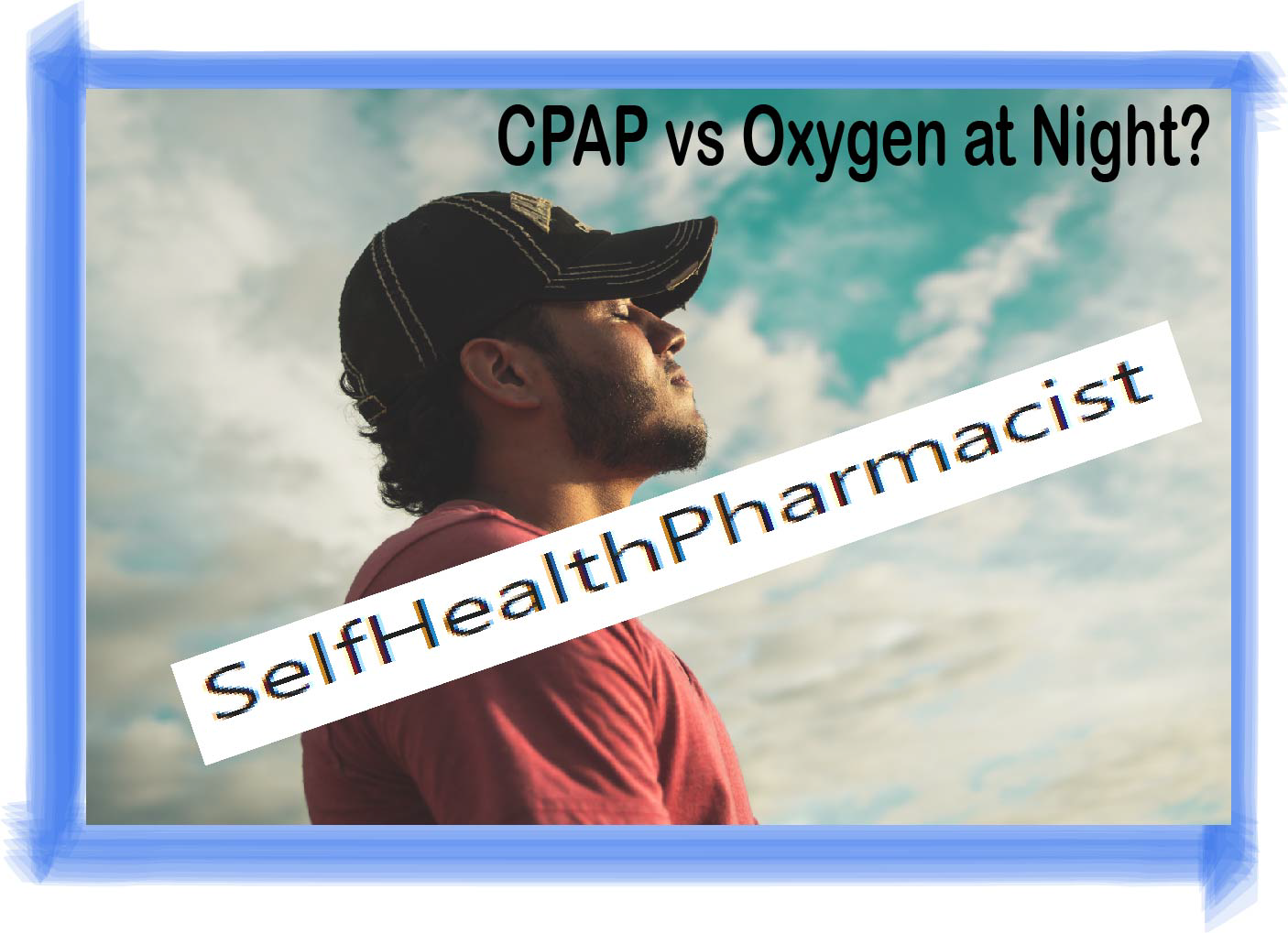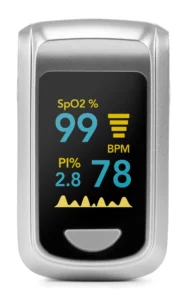No one will argue that a person needs sleep to restore strength after being awake.
It is important to understand that I mean healthy sleep!
Increasingly, people feel more tired and stressed in the morning than at the end of a hard day’s work.
“It’s all about a bad dream,” the majority will say, not realizing that behind the concept of “bad sleep” there has long been a formidable diagnosis that poses a danger to life.
Sleep disorders, nocturnal snoring and constant awakenings entail violations of the functions of the whole body.
But if you recognize the “enemy” in time, diagnose your sleep, you can get rid of problems and improve the quality of life.
That’s why today I want to understand what method will help with sleep apnea: CPAP or Oxygen Can?
Do you know that pulse oximeter can help you in detecting a sleep apnea?Pay attention to the best pulse oximeter in the market:Oxiline Pulse X Pro is currently the best fingertip pulse oximeter on the market with the easiest adjustment to your smartphone.
It can measure your Saturation Measurements and Perfusion Index in several seconds with 99% accuracy!
It can be used by both professional specialists and ordinary users at home. The latch fits snugly to the finger and does not move out during operation.The gadget consumes a minimum of energy, so it does not require frequent replacement of batteries.
Table of Contents
CPAP vs Oxygen at Night
Before choosing CPAP Machine or Oxygen for night, I would like you to tell the differences between them…
CPAP therapy is a widely used method for the treatment of diseases such as obstructive sleep apnea-hypopnea syndrome (OSAHS), mixed central-obstructive sleep apnea, as well as mild forms of chronic respiratory failure.
The use of oxygen cans has no restrictions.
Inhalation of the mixture can be shown to both healthy people and those with various diseases. Oxygen inhalations are useful for urban residents, athletes, schoolchildren during periods of increased mental and physical stress, and for weakened children.
For pregnant women, oxygen therapy helps to cope with toxicosis and reduce the risks of fetal development associated with hypoxia.

What are Working Processes of CPAP vs Oxygen?
Working Process CPAP Machine?
The CPAP machine is a compressor that is sensitive to the rhythm of a person’s breathing and supplies additional air to increase the pressure in the airways in order to improve their patency, helping the airflow on a natural breath to overcome the obstacle.
The therapy involves the use of a CPAP machine, which consists of three parts:
- A mask that covers the nose and/or mouth and is held in place by straps while sleeping.
- A tube connecting the mask to the oxygen supply machine.
- An engine that supplies oxygen through the tube to the mask at the right pressure.
Some CPAP machines offer other features such as heating and humidification.
Modern technologies have gone further, providing greater adaptability of devices to the breathing of patients.
Some devices automatically detect and adjust the pressure level, and also create an opportunity for easier inspiration by reducing the oxygen pressure.
Working Process of Oxygen Can?
The oxygen can is equipped with a simple convenient dispenser. Thanks to the dispenser, several people can use the balloon.
Individual use of the mask cartridge provides control over the consumption of the mixture and prevents the ingress of impurities from the surrounding air.
With the help of a mask, the procedure is carried out for children, the elderly and people with disabilities.
If a person has a serious illness, and constant oxygen therapy is required, then it is recommended to purchase not an oxygen cartridge, but a concentrator.
A special apparatus, with the production of high concentration oxygen from 1 to 3 liters per minute.
In this case, the patient breathes through a mask or nasal cannula.
The number and duration of procedures is determined by the physician.
Such therapy is prescribed for patients with pulmonary pathology, heart disease, cancer, and disorders of the nervous system. Sessions can be carried out at home and in the hospital.
Does Wearing Oxygen at Night Help Sleep Apnea?
The main indications for the use of an oxygen concentrator are:
- Intermittent breathing.
- Critically low blood pressure.
- Sleep Apnea.
- Violations of the mental state, consciousness.
The use of an oxygen can by patients with pneumonia, allows you to get a sterile, cleaned, and also humidified patient into the lungs.
To achieve a visible therapeutic effect, oxygen cans are used in conjunction with masks, nasal cannulas, and built-in nebulizers.
Inhalations using oxygen mixtures with bronchodilators, antibiotics are an opportunity not only to prevent hypoxia, but also to reduce inflammation, swelling, spasms, and bacterial infection of the lungs.
For reducing sleep apnea the duration of inhalation is 1-2 weeks for 10-15 minutes a day.
How Do you Know if CPAP therapy will be Effective?
To compare your condition before and after CPAP therapy, take the treatment at home for 7-10 nights.
If your doctor has such a machine, then try a few sessions of CPAP therapy at the clinic.
Since the therapy is carried out while he/she is sleeping, the patient himself can evaluate the effectiveness of the method only by how he feels in the morning, while the medical parameters of effectiveness are evaluated only by the doctor.
According to doctors, even with hundreds of respiratory arrests per night and severe hypoxemia, patients may not remember this and not complain.
To evaluate the method, modern automatic devices have SD memory cards, where the patient’s sleep parameters are recorded.
In the absence of a memory block, polysomnography should be performed once a year to evaluate CPAP treatment and correct treatment if necessary.
How Long Should I Use a CPAP Machine?
The apnea-hypopnea index (AHI) can show the average number of respiratory episodes of apnea/hypopnea per 1 hour of sleep.
The normal apnea-hypopnea index (AHI) is less than 5 episodes in one hour.
An AHI of 6 to 14 is mild, 15 to 29 is moderate, and above 30 is severe.
As a rule, in cases where the apnea index (AHI) is less than 30, it is sufficient to carry out CPAP therapy for 6-8 hours at night at a therapeutic pressure of 10-15 cm of water column.
However, in severe cases, when the therapeutic pressure should be 17-20 cm of the water column, a pronounced air resistance occurs in the mask.
As a result, the patient may experience problems with exhalation.
To solve this problem, the automatic CPAP machine has a function of facilitated exhalation, which provides a decrease in the pressure level during exhalation.
Final Words of Is Oxygen or CPAP Better?
CPAP is often the best treatment for obstructive sleep apnea associated with pauses in breathing or reduced inspiratory volume due to nasopharyngeal soft tissue descent.
Air passing through narrowed airways causes loud snoring. The pressure generated by the CPAP machine prevents the soft tissues from sinking and blocking the breath.
Oxygen therapy helps to cope with toxicosis and reduce the risks of fetal development associated with hypoxia.
FAQ
Should I use Oxygen while Sleeping?
A healthy person is not recommended to breathe air with a high concentration of oxygen during sleep.
The daily breathing rate should not exceed 10 minutes, at a flow rate of 3 liters and an oxygen concentration of 90%.
Do not fall asleep with an oxygen mask or cannulas on.
Usually, 2 to 5 deep breaths within 10 minutes are enough to return to normal health and relieve symptoms of lack of oxygen.
Only after 5 breaths and here you have clarity of thinking and a bright head!
For the prevention of sleep apnea, diseases and strengthening the immune system – daily 2 sessions of 5-10 breaths.
In a stressful situation, as well as to improve efficiency, 2-3 sessions are recommended with an interval of 10 minutes, consisting of 8-10 breaths.
What are the symptoms of low oxygen at night?
Shortness of breath, chest pain, confusion, headache and rapid heartbeat, cyanosis of the nasolabial triangle and fingertips – such unpleasant symptoms can appear if the level of oxygen in the blood begins to fall.
Is a CPAP like oxygen?
CPAP machines work by a stream of oxygen delivered into your airways so it leads you to breathe continuously while you sleep.
